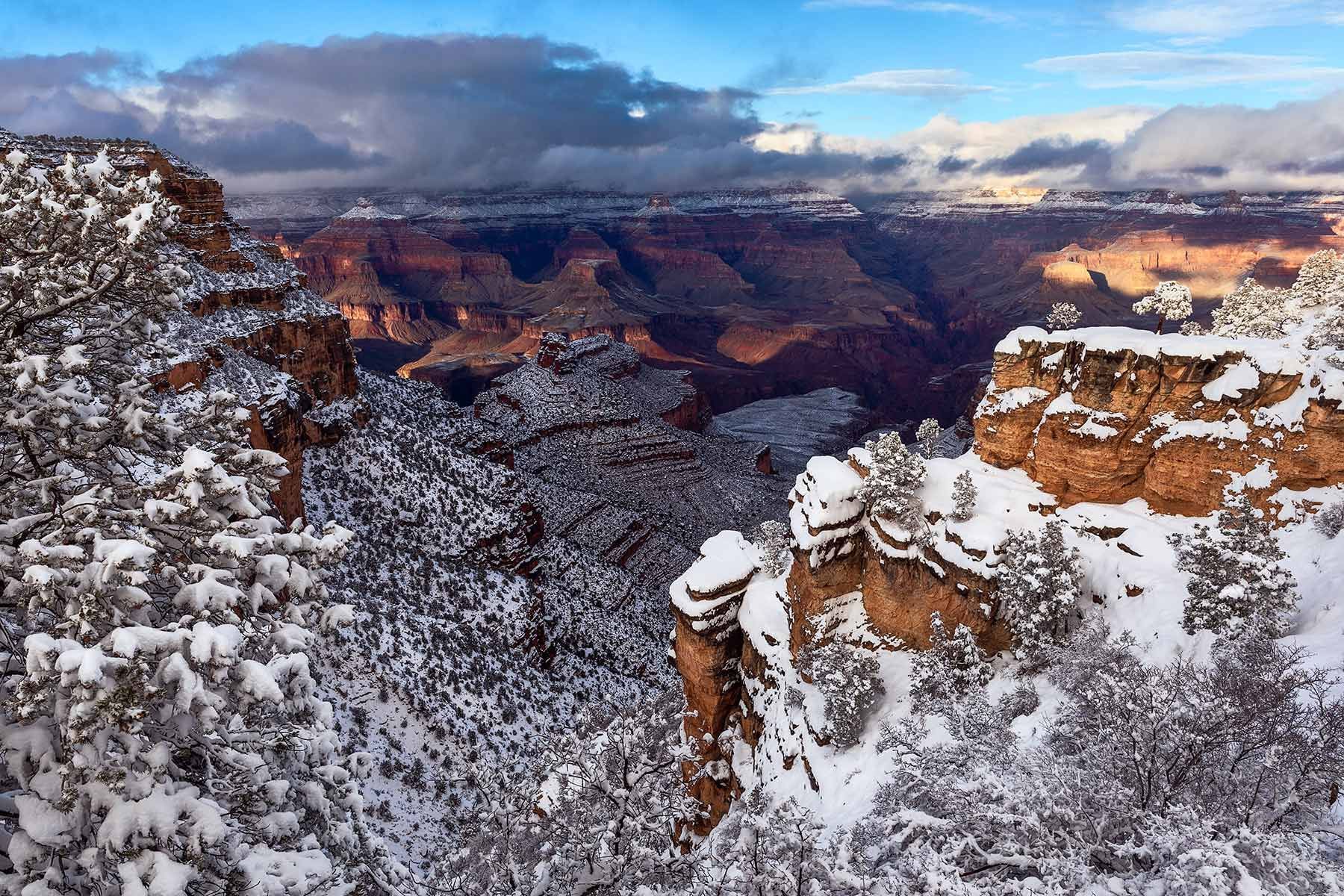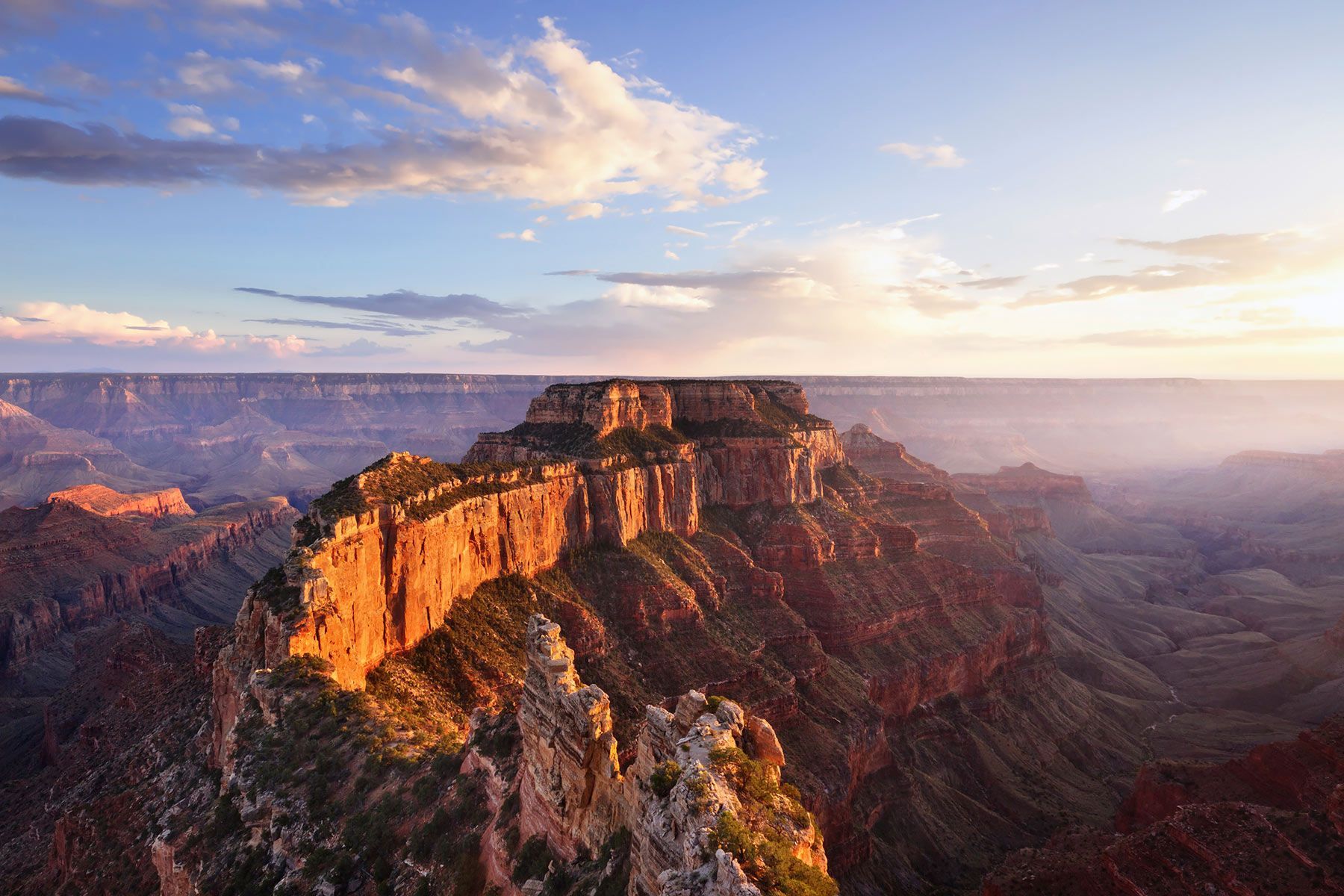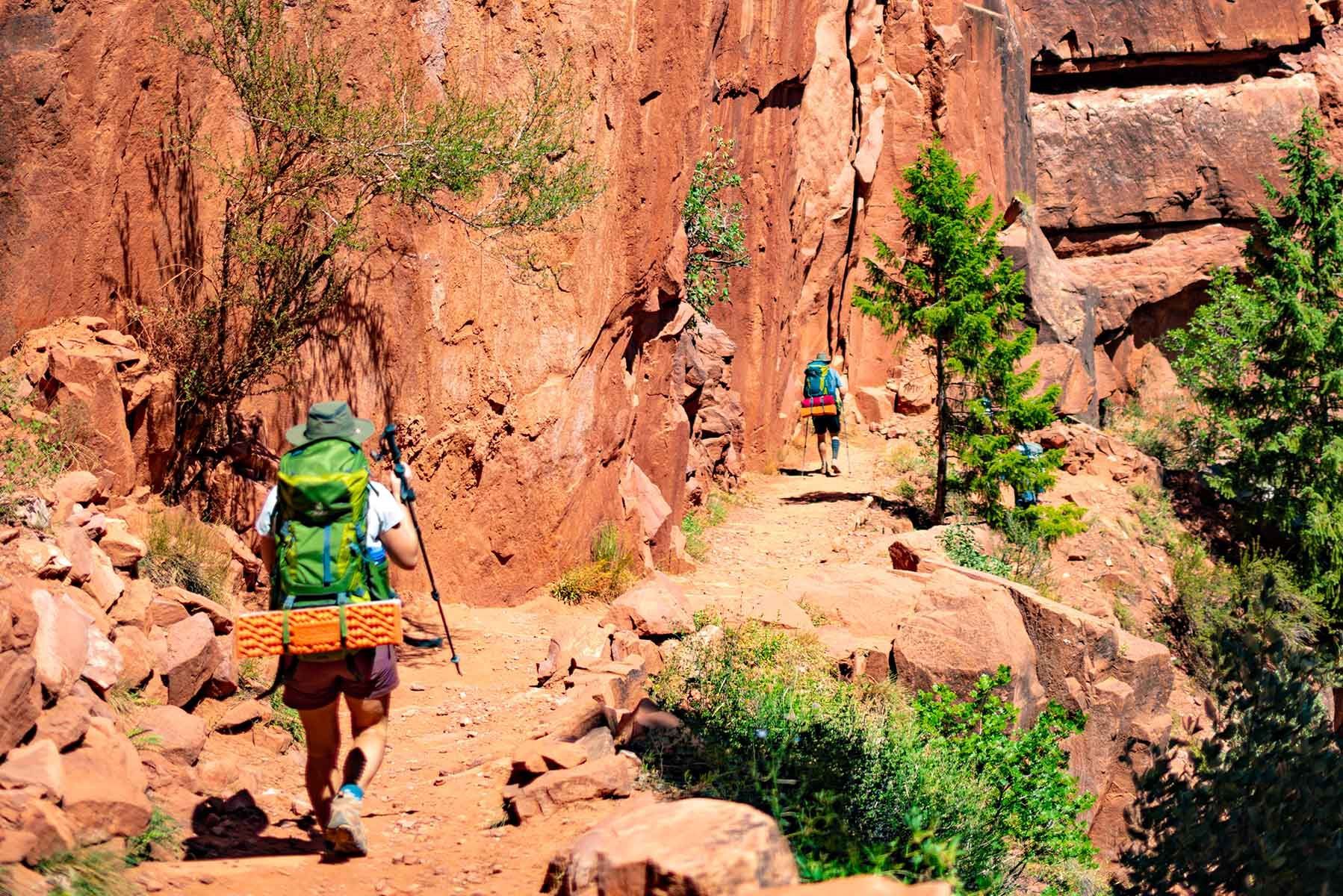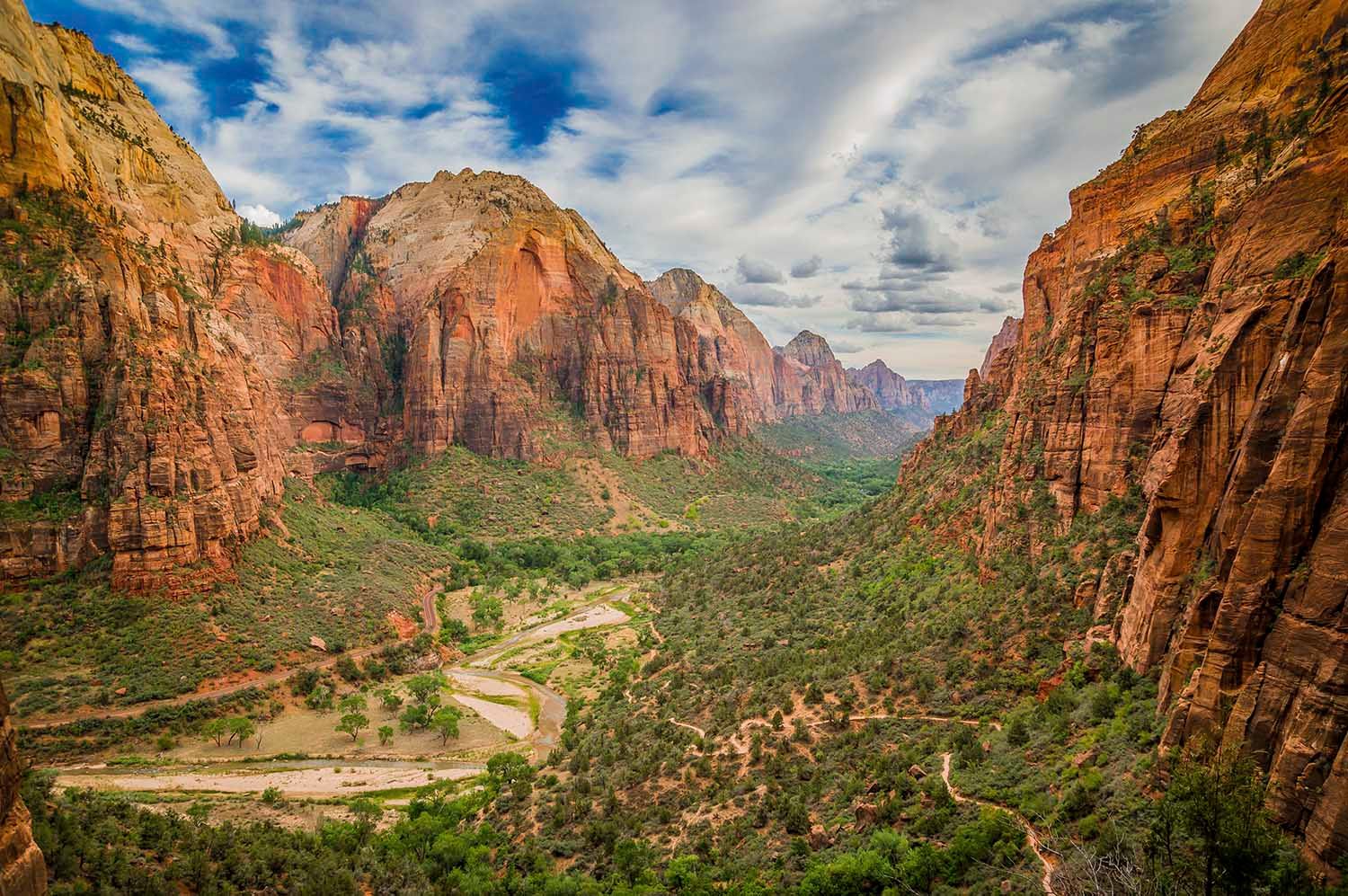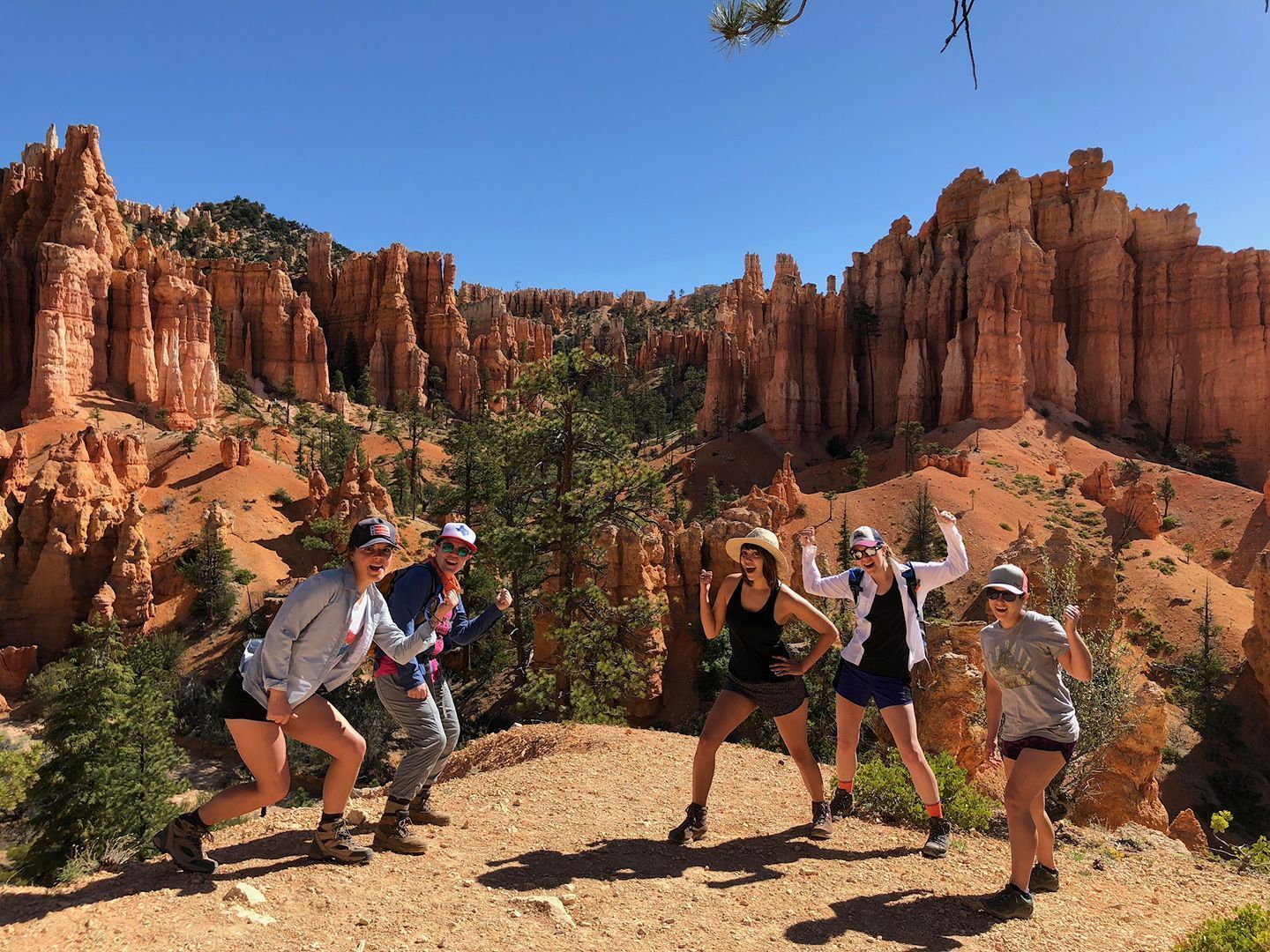The Heat Is On: Grand Canyon Hiking In The Summer (Part I)
Key Takeaways
- Start your Grand Canyon hike early — Aim to hit the trail 30–45 minutes before first light to avoid peak heat hours between 10 a.m. and 4 p.m. and enjoy the canyon’s most scenic, peaceful moments.
- Follow nature’s rhythm — Take cues from local wildlife by being most active during dawn and dusk, when temperatures are cooler and the experience feels more natural and serene.
- Stay wet to stay cool — Full-body immersion in creeks or streams is one of the most effective ways to regulate body temperature during Grand Canyon hiking tours in summer.
- Plan your route around water sources — Choose trails like Bright Angel or North Kaibab that provide regular access to piped water and perennial streams for safety and comfort.
- Hike smart, not hard — With proper planning, hydration, and cooling techniques, even the 100°F Grand Canyon summer heat can become part of an unforgettable adventure.
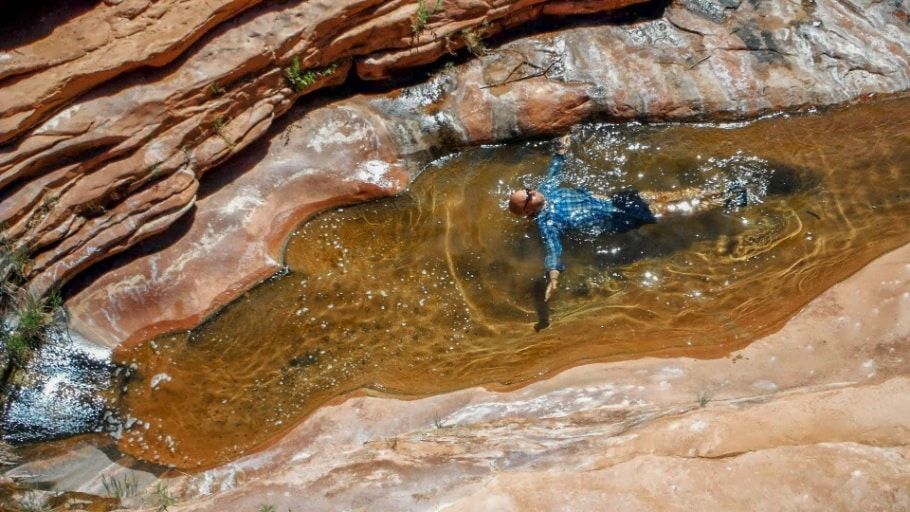
As early as late May, daytime temperatures at the bottom of Grand Canyon will regularly hit, and exceed, 100 degrees Fahrenheit (38 Celsius). This heat kicks in quickly and typically continues through the first couple of weeks of September, making Grand Canyon hiking tours a little more challenging.
Although, the heat shouldn’t keep any adventurer from planning & enjoying that dream vacation into the depths of the world’s most famous gorge. With solid planning and a handful of good information and helpful hints, a summer hike can be a wonderful experience!
The ‘Local Way’ to Stay Cool
One of the most valuable lessons to surviving the searing summer heat is learned from the locals…and we’re referring to the wildlife, not the people. The myriad reptiles, mammals, and amphibians have been thriving & surviving out here for millennia. Now granted, many of them have special physiological adaptations that help them along the way, but a good deal of their success in the heat is due to simple modifications in their behavior.
Understanding Mother Earth’s Sun Clock
Perhaps the most obvious behavior is avoiding too much activity during the hottest times of the day (between 10am and 4pm). A backpacker won’t see too many creatures out and about when the sun is high in the sky. Most animals are either nocturnal (only active at night) or crepuscular (the nerdy scientific term for activity centered around dawn and dusk).
So if you’re planning to cover 7 or 8 miles in the canyon one day and the high temps are forecast near or above 100F, your best option is too start hiking early. Wake up in the dark, get yourself packed up, and try to hit the trail about 30 to 45 minutes before first light (not to be confused with sunrise). A headlamp will be necessary for a little while, but before you know it, the first hints of daylight will begin creeping up in the eastern sky and you’ll be able to see just fine with your unaided eyes.
The next 2 hours or so will offer the most beautiful and magical time to be hiking. Many of our guests enjoy these sunrise moments during our Grand Canyon Basecamp Adventure, where comfortable camping and expert guides make the experience both safe and unforgettable.
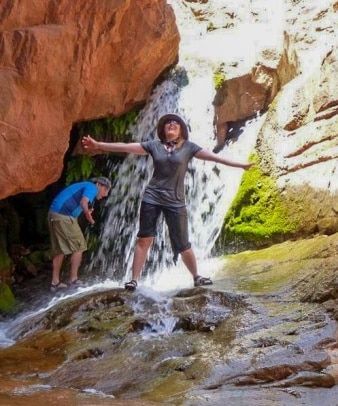
Staying Wet on Grand Canyon Hiking Tours
The next best piece of advice for those looking to bear the summer heat below the rim, is to STAY WET! If you have planned properly, your hiking route will rarely be too far from flowing water. If you’re considering a Grand Canyon backpacking trip, these corridor routes are ideal for summer hikers who want regular water access.
The main trans-canyon corridor trails (North Kaibab & Bright Angel) have relatively frequent access to water, whether piped drinking water or perennial streams, so there is rarely the need to travel too far without the opportunity to cool off.
Rinsing your face or dabbing your neck with a moist bandana will not do the job. Lie down in the creeks with all your clothes on (take your shoes and socks off first) for full immersion. Yes, the initial shock of the cold water is a bit uncomfortable for some but it literally lasts half a second and then you’ll be grinning from ear to ear with sublime pleasure.
Staying in the water for a few minutes will help bring your body’s core temperature back down which is the key here. Then put your shoes and socks back on, strap on your backpack, and head on down (or up) the trail, soaking wet! You will probably be amazed at how quickly you dry off but all that evaporation is drawing more heat from your body and keeping you even cooler. Repeat this procedure when you start to get hot again and you’ll find that you can stay pretty comfy even during the hotter parts of the day.
Frequently Asked Questions
Planning a Grand Canyon hike in summer? Here are answers to the most common questions about staying safe, cool, and comfortable while exploring the canyon in high heat.
How hot does it get in the Grand Canyon during summer?
Temperatures at the bottom of the Grand Canyon can easily exceed 100°F (38°C) from late May through early September. The heat is most intense between 10 a.m. and 4 p.m., making it essential to plan hikes during cooler morning or evening hours.
What’s the best time of day to hike in the Grand Canyon during summer?
Start your hike early — ideally 30 to 45 minutes before first light. The hours around dawn offer cooler air, stunning sunrise views, and better conditions for long treks before the sun becomes too intense.
How can I stay cool while hiking in the Grand Canyon?
Stay wet as much as possible. Use streams or creeks to cool off by fully immersing yourself — not just splashing water on your face. The evaporation that follows helps lower your body temperature and keeps you comfortable longer.
Are there reliable water sources along Grand Canyon trails?
Yes. The main corridor trails, such as Bright Angel and North Kaibab, offer regular access to water — either from piped drinking stations or perennial streams. Always check seasonal water availability before your trip and carry purification options.
What should I do if I start overheating on the trail?
Find shade and rest immediately. Rehydrate, soak your clothing or bandana in water, and allow your body temperature to cool before continuing. Avoid pushing through heat exhaustion — it can quickly escalate to a serious emergency.
What is the safest way to plan a summer Grand Canyon backpacking trip?
Plan your route around early starts, shaded rest stops, and water access points. Choose established corridor trails for reliable hydration, and consider guided trips for added safety, expert advice, and a more enjoyable experience.
Why do animals stay hidden during the day in the canyon?
Most wildlife are nocturnal or crepuscular, meaning they’re active at night or during dawn and dusk. This natural adaptation helps them conserve energy and avoid dangerous daytime heat — a smart strategy for hikers to follow as well.
Can beginners safely hike the Grand Canyon in summer?
Yes — with careful preparation. Choose shorter routes or guided tours, start early, stay hydrated, and keep wet when possible. Even novice hikers can safely enjoy the canyon if they respect the heat and follow expert advice.
What makes guided Grand Canyon hikes different?
Guided tours, like those offered by Four Season Guides, provide professional expertise, safety support, and local insight. They handle logistics such as timing, water access, and route planning, letting hikers focus on the scenery and experience.
What’s the most rewarding time to hike in the canyon?
Sunrise. The first light over the canyon walls creates magical views and cooler, peaceful conditions — an unforgettable experience for anyone hiking early in the day.
Grand Canyon Hiking: Looking for the experience of a lifetime, under the Arizona sun? Look no further than a bucket-list Grand Canyon hiking or backpacking experience with Four Season Guides. Four Season Guides also offers adventures in destinations across the Southwest, from Utah’s red rock deserts to the alpine meadows of Yosemite. To book your trip today or for more information on adventures, visit: fsguides.com
Four Season Guides, 506 N Grant St suite o, Flagstaff, AZ 86004, United States
+19285251552
35.19653980, -111.62000560

